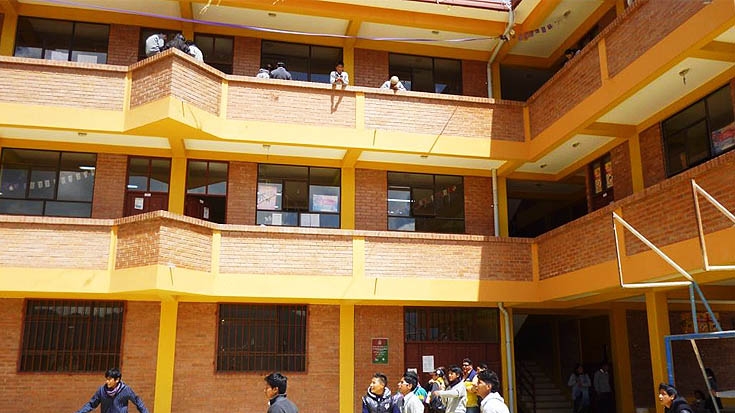RESULTS
By March 2013, the project contributed the following results:
- In 19 school buildings (four new, three reconstructed, and twelve existing), 15,840 additional secondary school places were added. The new schools were fully functioning with teaching and administrative staff by project completion.
- The project improved science and computer labs, libraries, recreational areas, multipurpose rooms, sanitary blocks, and administrative areas.
- The Center for High Educational Performance in San Antonio, fully equipped and staffed, is providing pedagogical support to around 11,000 teachers, community members, and students.
- Teacher training materials for the Incentive Program for At Risk Students were developed and made available; 156 teachers were trained and 10,131 students have already benefitted. The project also completed and deposited a physical and digital archive for future use.
- The strengthened decentralized management capacity resulted in (i) 113 school management teams, (ii) 92 school improvement projects, (iii) regulations for school maintenance roles and responsibilities developed and used; provision of equipment and furniture for the Directorate of Education and training of staff to monitor, manage and evaluate project activities; and municipal information system strengthened.
In addition, the municipal education budget has increased over the last four years. Preventive main- tenance of school buildings is now mainstreamed into the municipality’s regular work. The Center for High Educational Performance model was replicated, with two additional centers in Cotahuma and Periférica, financed by the municipality.
WORLD BANK GROUP CONTRIBUTION
The project was financed by a Bank credit in the amount of US$10 million which was fully disbursed.
PARTNERS
The project, through the Directorate of Education, collaborated with the Municipal Training Center to elaborate training materials for the Incentive Program and to deliver the training. For the Civic Values Program, the project collaborated with the Plurnational School of Public Administration (Escuela de Gestión Pública Plurinacional), the Bolivian Salesian University (Universidad Salesi- ana Boliviana), the San Pablo Bolivarian Catholic University (Universidad Católica Bolivariana San Pablo), the Departmental and district offices, the United Nations Population Fund, the Women’s Development Center, the Municipal Training Center and other municipal departments, to elaborate and teach the curriculum of the post-graduate degree.


